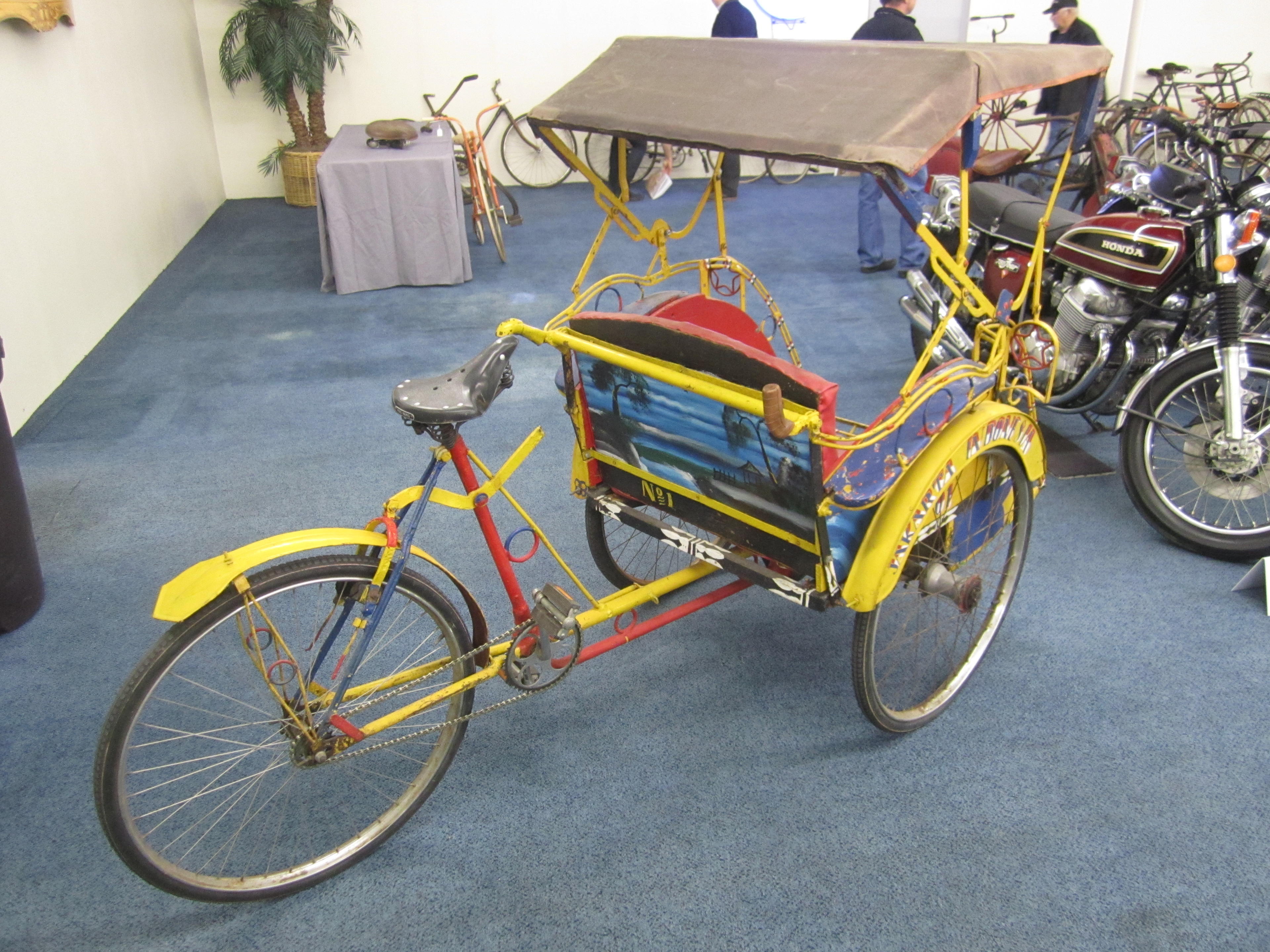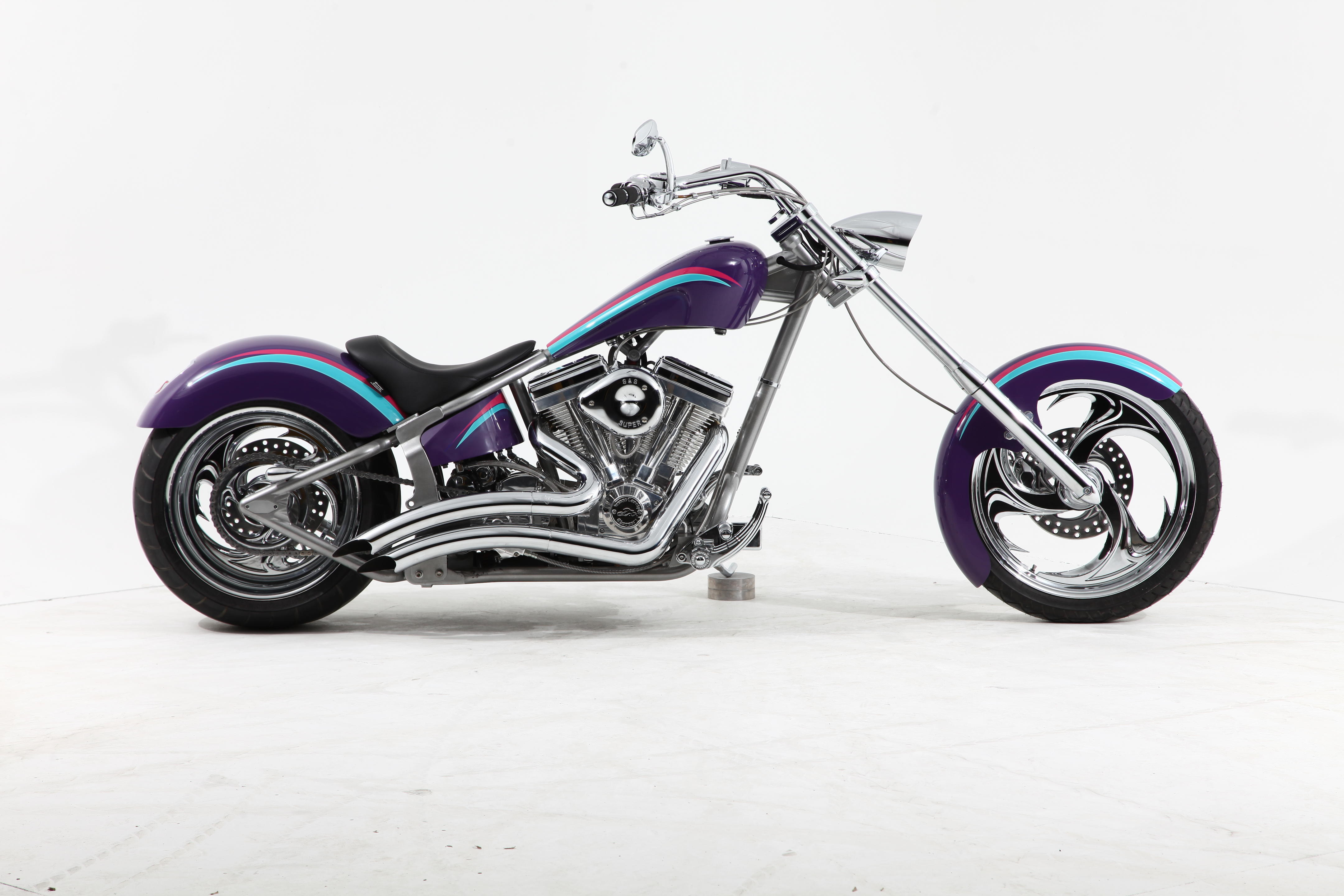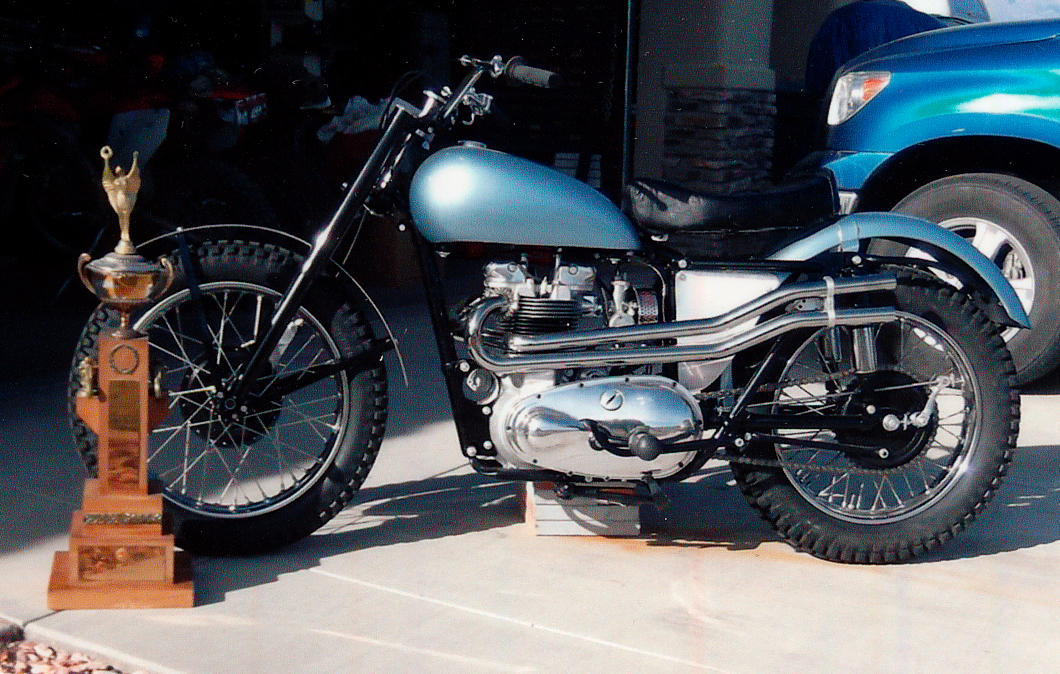The Indian Chief was the most important and longest running model in the company's production history. It was a capable mount and comfortable whether it was simply ridden around town or wandering the roads across America. The first Chief appeared in 1922 with a 61ci displacement side-valve engine reflecting the earlier Powerplus engine and quickly followed with the Big Chief displacing 74ci in 1923. The company became stuck in the use of this motor until their last days because resources were non-existent. Following World War II, the Chief's engine was badly obsolete in the face of Harley-Davidson's OHV Knucklehead motor. In 1947, the Indian Chief soldiered on with its reliable but aging sidevalve V-twin. One of the outstanding features of this motorcycle is the signature skirted fenders which debuted in 1940 and were carried to Indian's final days in 1953. Undoubtedly the fenders made the Indian one of the most stylish motorcycles ever produced. Refinements to the Chief in 1947 included a new front fender running light featuring the Indian head & war bonnet, and stamped metal badges using the Indian script replaced the earlier Indian head style badges on the gas tanks. The chassis featured Indian's Spring Cradle Frame which debuted in 1940 and a compliant girder fork which was developed for Indian's wartime motorcycles. Indian's rival, Harley-Davidson, would not receive rear suspension until 1956 on their Big Twins, giving the Iron Redskin a definite edge in comfort. Standard controls on the Indian included a left-hand throttle, right-hand manual spark advance, and a 3-speed hand shift with a foot rocker clutch (these controls could be reversed at the owner's discretion). Indian's streamlined design hid the speedometer between the gas tank halves and covered the instrument with an elegant cast aluminum cover. A new larger cast-iron oil pump was fitted for 1947 only. Three variations of the Chief were offered to riders of 1947, including the stripped down Clubman, the Sportsman with limited accessories and finally the Roadmaster which came with factory accessories to make it the best touring motorcycle to ever roll out of the Wigwam. Roadmasters featured a dual passenger Chumme seat, leather saddlebags, windshield, a rear fender mounted luggage carrier, front and rear chromed crash bars plus extra chrome. Standard color options included black, Seafoam Blue and the perennial Indian Red however many dealers could obtain special order two-color paint schemes. Nothing looked better than an Indian with the company's graceful skirted fenders in 1947. Even in modern times, it is hard to beat the quality of the ride and look of an Indian Chief.
The Indian Chief was the most important and longest running model in the company's production history. It was a capable mount and comfortable whether it was simply ridden around town or wandering the roads across America. The first Chief appeared in 1922 with a 61ci displacement side-valve engine reflecting the earlier Powerplus engine and quickly followed with the Big Chief displacing 74ci in 1923. The company became stuck in the use of this motor until their last days because resources were non-existent. Following World War II, the Chief's engine was badly obsolete in the face of Harley-Davidson's OHV Knucklehead motor. In 1947, the Indian Chief soldiered on with its reliable but aging sidevalve V-twin. One of the outstanding features of this motorcycle is the signature skirted fenders which debuted in 1940 and were carried to Indian's final days in 1953. Undoubtedly the fenders made the Indian one of the most stylish motorcycles ever produced. Refinements to the Chief in 1947 included a new front fender running light featuring the Indian head & war bonnet, and stamped metal badges using the Indian script replaced the earlier Indian head style badges on the gas tanks. The chassis featured Indian's Spring Cradle Frame which debuted in 1940 and a compliant girder fork which was developed for Indian's wartime motorcycles. Indian's rival, Harley-Davidson, would not receive rear suspension until 1956 on their Big Twins, giving the Iron Redskin a definite edge in comfort. Standard controls on the Indian included a left-hand throttle, right-hand manual spark advance, and a 3-speed hand shift with a foot rocker clutch (these controls could be reversed at the owner's discretion). Indian's streamlined design hid the speedometer between the gas tank halves and covered the instrument with an elegant cast aluminum cover. A new larger cast-iron oil pump was fitted for 1947 only. Three variations of the Chief were offered to riders of 1947, including the stripped down Clubman, the Sportsman with limited accessories and finally the Roadmaster which came with factory accessories to make it the best touring motorcycle to ever roll out of the Wigwam. Roadmasters featured a dual passenger Chumme seat, leather saddlebags, windshield, a rear fender mounted luggage carrier, front and rear chromed crash bars plus extra chrome. Standard color options included black, Seafoam Blue and the perennial Indian Red however many dealers could obtain special order two-color paint schemes. Nothing looked better than an Indian with the company's graceful skirted fenders in 1947. Even in modern times, it is hard to beat the quality of the ride and look of an Indian Chief.















Testen Sie LotSearch und seine Premium-Features 7 Tage - ohne Kosten!
Lassen Sie sich automatisch über neue Objekte in kommenden Auktionen benachrichtigen.
Suchauftrag anlegen